Building a Subwoofer Enclosure
by endesereth in Circuits > Audio
448815 Views, 583 Favorites, 0 Comments
Building a Subwoofer Enclosure
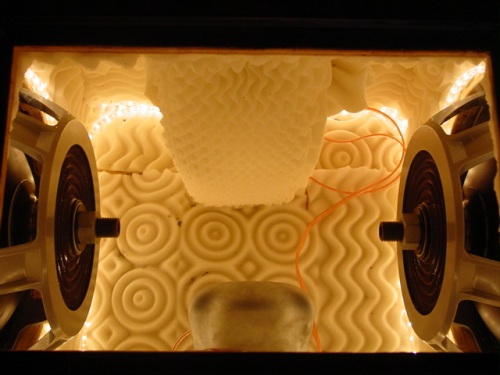
Designing and building your own subwoofer can be a rewarding experience. Not only will it save you money, you will also get better performance than prebuilt subwoofers, and you can make the subwoofer to what your needs are. Building a subwoofer may seem like a daunting task, but with this procedure, I will show you how easy and fun it can be. To build a subwoofer one of the skills that you need are woodworking skills. The woodworking entails building a box, bracing the inside, and staining or painting the box. Any electrical and acoustic knowledge is not required but it could be helpful. To fully construct a subwoofer it can take a couple of days to a week depending on how fancy you want to design the box and how long it takes you to cut the wood.
Parts and Tools
Parts that are required:
Circular saw
Woodglue
A computer
Long wood clamps (length depends on what size you are going to build the box)
Pencil or pen (to mark measurements)
Items that are optional but are highly recommended:
Sandpaper (to smooth surfaces)
woodscrews (to ensure a good tight bond)
Drill (to screw in the woodscrews)
A large ruler (to measure wood)
A helping Hand (if you need to move heavy objects)
Access to a truck (to move boards of wood around)
Router (this is used to cut the circles that the subwoofer will be sitting it, while getting a router is optional it is very helpfull to have one to get dimensions right)
Items you need to buy:
Suboofer of your choice
Wood
Speaker wire Terminals
Speaker Wire
Optional Items you can buy:
Subwoofer box feet (optional)
Paint or stain or box carpet (optional)
Insulation (optional, what insulation does is help dampen the box, this can give clear and deep sounding bass)
Speaker grills
Circular saw
Woodglue
A computer
Long wood clamps (length depends on what size you are going to build the box)
Pencil or pen (to mark measurements)
Items that are optional but are highly recommended:
Sandpaper (to smooth surfaces)
woodscrews (to ensure a good tight bond)
Drill (to screw in the woodscrews)
A large ruler (to measure wood)
A helping Hand (if you need to move heavy objects)
Access to a truck (to move boards of wood around)
Router (this is used to cut the circles that the subwoofer will be sitting it, while getting a router is optional it is very helpfull to have one to get dimensions right)
Items you need to buy:
Suboofer of your choice
Wood
Speaker wire Terminals
Speaker Wire
Optional Items you can buy:
Subwoofer box feet (optional)
Paint or stain or box carpet (optional)
Insulation (optional, what insulation does is help dampen the box, this can give clear and deep sounding bass)
Speaker grills
Choosing a Subwoofer and Type of Box
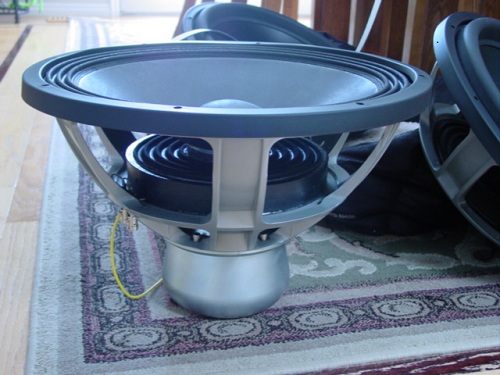
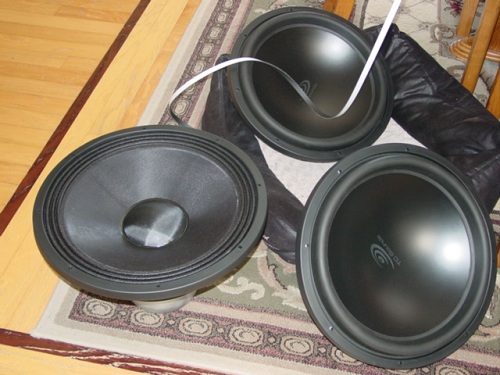
1) Choosing a subwoofer, in my opinion is the hardest step. Mainly because there are so many choices to choose from. Here are some sites that one can check out to choose a subwoofer.
http://www.parts-express.com/
http://www.madisound.com/
http://www.sonicelectronix.com/
Some things to consider when choosing a subwoofer are;
-What you want the subwoofer to do
-Xmax
-Efficiency
-Frequency response
-Impedance
Here is a site that will help with understanding these and what you want to do with them.
http://www.parts-express.com/resources/home-howtoguide/specs.cfm
2) There are many types of boxes that you can make. I will only go through the more common ones, but if you are curious of what choices there are, and what benefits they have just use google.
Sealed: provides a flat response, bass sounds tight, usually can handle more power
Vented: efficient, great bass response, has complications of port noise
Passive Radiator: Has good amplification at tuning frequency like vented, no port noise, great response, more expensive
Here is a site where you can read up if you want more information
http://www.parts-express.com/resources/home-howtoguide/choose.cfm
In my build I have chosen the TC Sounds PRO 5100 (older generation) with a couple of VMP18 passive radiators as shown in my pictures.
http://www.parts-express.com/
http://www.madisound.com/
http://www.sonicelectronix.com/
Some things to consider when choosing a subwoofer are;
-What you want the subwoofer to do
-Xmax
-Efficiency
-Frequency response
-Impedance
Here is a site that will help with understanding these and what you want to do with them.
http://www.parts-express.com/resources/home-howtoguide/specs.cfm
2) There are many types of boxes that you can make. I will only go through the more common ones, but if you are curious of what choices there are, and what benefits they have just use google.
Sealed: provides a flat response, bass sounds tight, usually can handle more power
Vented: efficient, great bass response, has complications of port noise
Passive Radiator: Has good amplification at tuning frequency like vented, no port noise, great response, more expensive
Here is a site where you can read up if you want more information
http://www.parts-express.com/resources/home-howtoguide/choose.cfm
In my build I have chosen the TC Sounds PRO 5100 (older generation) with a couple of VMP18 passive radiators as shown in my pictures.
Designing the Box With WinISD
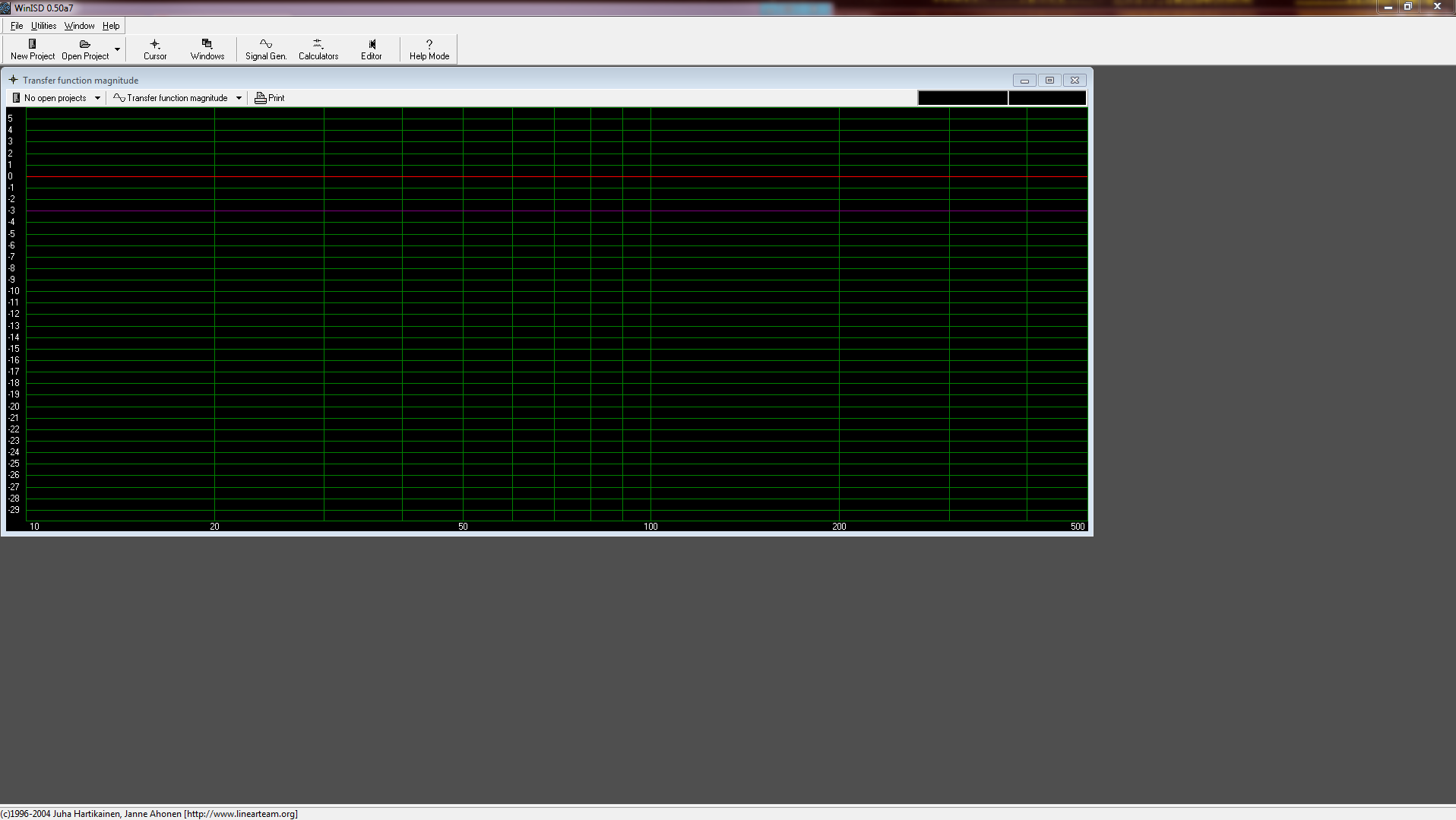
Now design the box.
1) Go to WinISD's main site,
http://www.linearteam.dk/?pageid=winisd
2) Download WinISD PRO.
3) After download is complete run executable file.
4) Follow installation steps.
5) Once installation is done run the program.
A window will show up looking like the picture above.
6) Here is a tutorial on how to use winISD PRO.
http://www.hometheatershack.com/forums/diy-subwoofers-general-discussion/6330-winisd-pro-tutorial-download-detailed-guide-how-use-winisd-pro.html
Note:
-If you are doing this for car audio, you usually want to tune your box around 25 to 35hz depending how flat you want your frequency response to be. In home audio and Home theater set ups you usually want to tune the box from 16 to 24hz.
Note: To keep in mind is that this is a simulation software, the final product will not fully respond to what the program simulates. In the real world you will have room gain, meaning that the room that you set the subwoofer in will cause amplification and cancellation at certain frequencies.
1) Go to WinISD's main site,
http://www.linearteam.dk/?pageid=winisd
2) Download WinISD PRO.
3) After download is complete run executable file.
4) Follow installation steps.
5) Once installation is done run the program.
A window will show up looking like the picture above.
6) Here is a tutorial on how to use winISD PRO.
http://www.hometheatershack.com/forums/diy-subwoofers-general-discussion/6330-winisd-pro-tutorial-download-detailed-guide-how-use-winisd-pro.html
Note:
-If you are doing this for car audio, you usually want to tune your box around 25 to 35hz depending how flat you want your frequency response to be. In home audio and Home theater set ups you usually want to tune the box from 16 to 24hz.
Note: To keep in mind is that this is a simulation software, the final product will not fully respond to what the program simulates. In the real world you will have room gain, meaning that the room that you set the subwoofer in will cause amplification and cancellation at certain frequencies.
Sizing the Box
1) Once you have selected all the parameters of the subwoofer that you want using winISD. Now design the box that you want the subwoofer to be in. Here is a site that will help you with calculating volumes of boxes.
http://www.hometheatershack.com/forums/enclosure-volume-calculator/
Suggestion:
-When designing the box you will have to brace all the sides of the box. The reason why is to prevent the box from rattling and falling apart. You will have to account for the volume that the bracing will take inside the box. Another thing to account for is how much volume that the subwoofer will take inside the box. If you have decided to put a port inside your box remember to account for volume that it will take inside the box. One option that I did was to double and triple the box's walls.(which I did because I am going to be putting a piece of plexiglass on top of the box to look inside) This makes it so you don't have to brace the box extensively.
http://www.hometheatershack.com/forums/enclosure-volume-calculator/
Suggestion:
-When designing the box you will have to brace all the sides of the box. The reason why is to prevent the box from rattling and falling apart. You will have to account for the volume that the bracing will take inside the box. Another thing to account for is how much volume that the subwoofer will take inside the box. If you have decided to put a port inside your box remember to account for volume that it will take inside the box. One option that I did was to double and triple the box's walls.(which I did because I am going to be putting a piece of plexiglass on top of the box to look inside) This makes it so you don't have to brace the box extensively.
Buying Everything
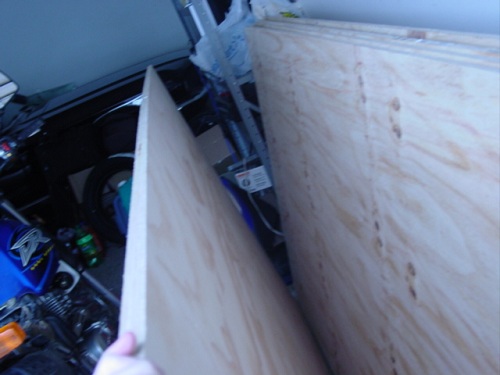
1) Now buy all the tools, wood, and supplies that you need to build the box and set up the subwoofer.
Tip:
-There are many varieties of wood out there to choose from, I personally like hardwood, birch, and mdf.
Avoid thin wood because the subwoofer will cause major amounts of compression and decompression inside the box.
Don't go with super expensive wire and other snake oil products.
Tip:
-There are many varieties of wood out there to choose from, I personally like hardwood, birch, and mdf.
Avoid thin wood because the subwoofer will cause major amounts of compression and decompression inside the box.
Don't go with super expensive wire and other snake oil products.
Cutting Wood
Once you have received all of your supplies now its time to get into the dirty work.
1) Lay the boards on a flat surface
2) Measure and mark the boards to the dimensions that you have previously planned when designing the box.
3) After all measurements and markings have been done move the boards to a surface where you can start cutting.
4) Start cutting where you have marked the measurements.
Advice:
-When cutting the wood and making the box, one needs to remember all safety steps. Remember to wear safety glasses, gloves, good clothing, and other safety tips and requirements.
-Measure twice cut once,
-Be in an open and ventilated area, don't breath in sawdust.
1) Lay the boards on a flat surface
2) Measure and mark the boards to the dimensions that you have previously planned when designing the box.
3) After all measurements and markings have been done move the boards to a surface where you can start cutting.
4) Start cutting where you have marked the measurements.
Advice:
-When cutting the wood and making the box, one needs to remember all safety steps. Remember to wear safety glasses, gloves, good clothing, and other safety tips and requirements.
-Measure twice cut once,
-Be in an open and ventilated area, don't breath in sawdust.
Assembly
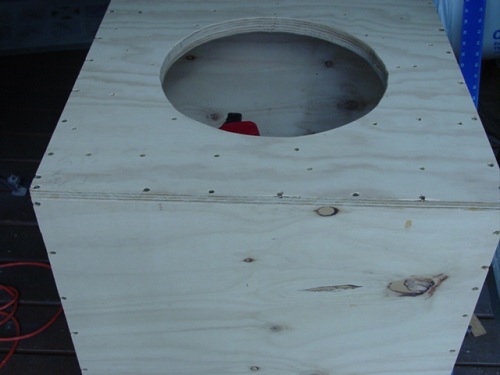
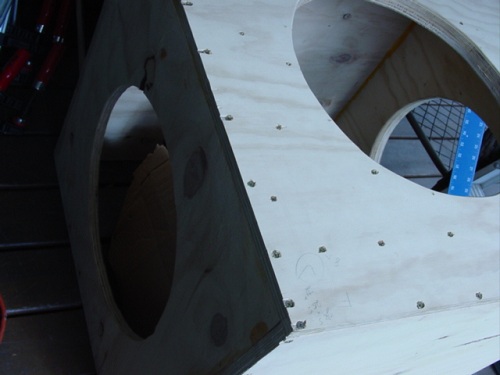
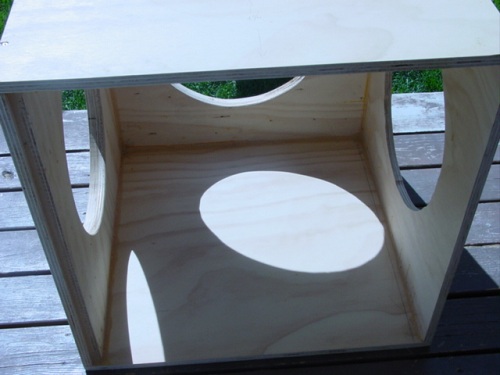
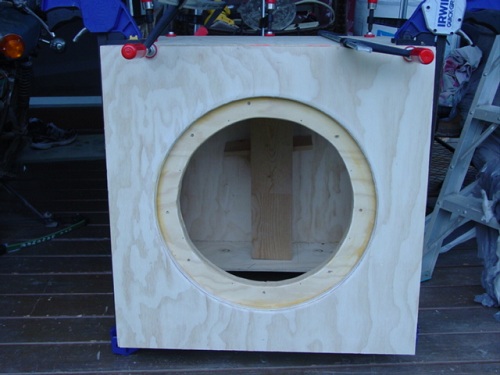
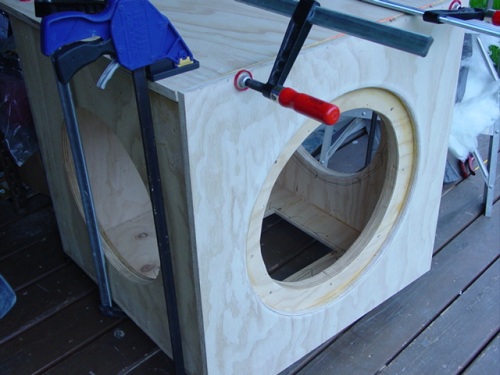
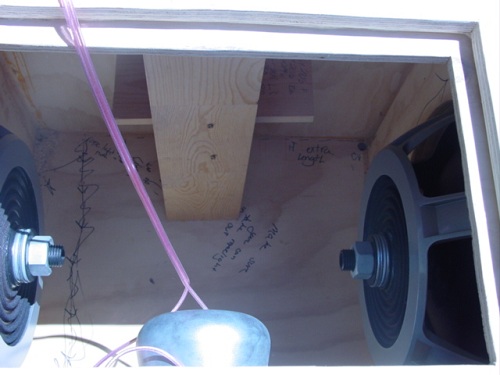
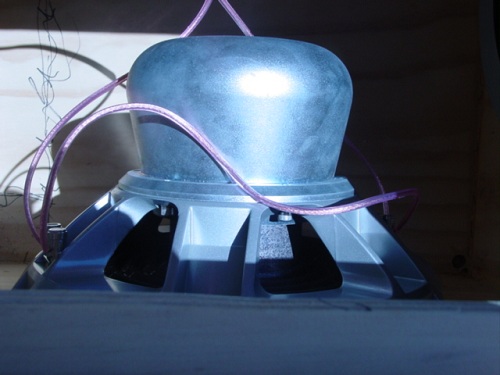
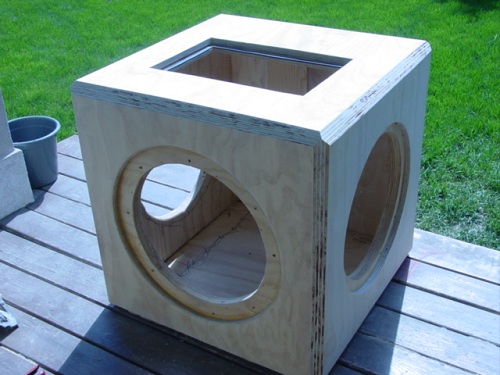
Now its time to assemble the subwoofer.
1) Assemble the cut boards according to your design
Advice:
-Make sure that you dont miss any parts when assembling. Nothing is worse then seeing that you missed putting in a brace when the subwoofer is finished.
-When assembling make sure that you clamp everything to ensure a good bond. You can also use wood screws to help keep a tight bond.
-If you notice any open cracks make sure to fill it with glue or some other filling material. You want this subwoofer to be air tight otherwise you will hear high whistling from the sub when it is playing.
1) Assemble the cut boards according to your design
Advice:
-Make sure that you dont miss any parts when assembling. Nothing is worse then seeing that you missed putting in a brace when the subwoofer is finished.
-When assembling make sure that you clamp everything to ensure a good bond. You can also use wood screws to help keep a tight bond.
-If you notice any open cracks make sure to fill it with glue or some other filling material. You want this subwoofer to be air tight otherwise you will hear high whistling from the sub when it is playing.
Aesthetics
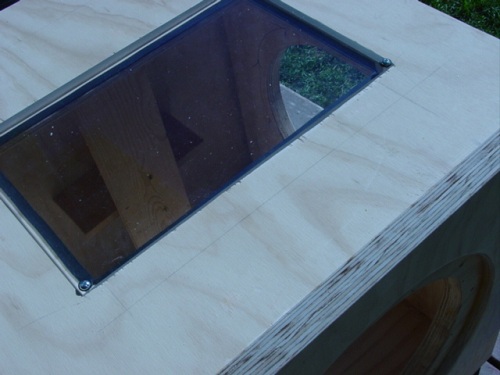
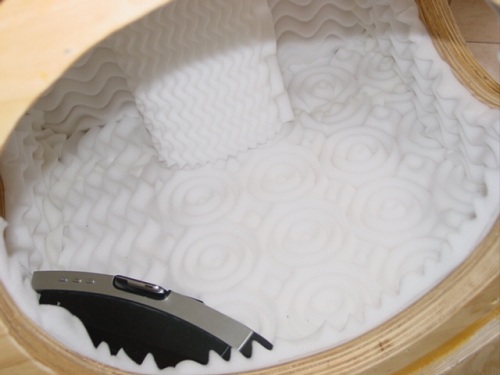
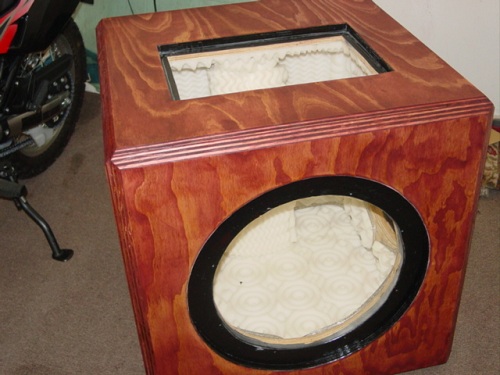
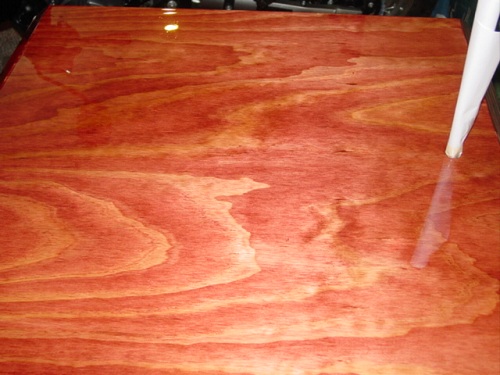
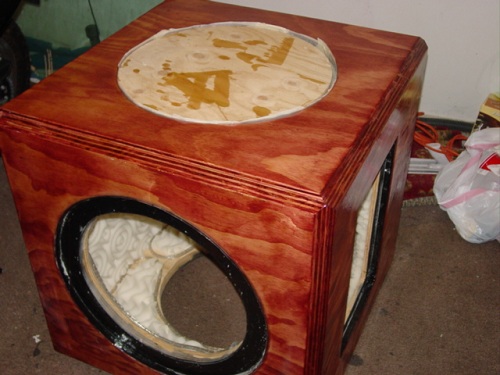
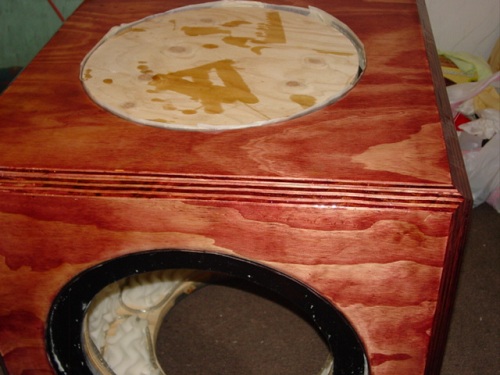
This step is completely up to you. This is where you take hold of your creative imagination and make this subwoofer look like a subwoofer from your dreams.
On my build, I decided to install a plexiglass sheet on the top so I can see inside the subwoofer. On the corners of the box I decided to cut 45 degree angles into the wood giving it a nice clean look. The reason why I can do this is because I didn't brace that much inside and to compensate I made the walls 1.5 and 2.25 inches thick. I also decided to stain my box and coat it in several coats of liquid glass to give it a shine.
Here are some progress pictures shown above.
On my build, I decided to install a plexiglass sheet on the top so I can see inside the subwoofer. On the corners of the box I decided to cut 45 degree angles into the wood giving it a nice clean look. The reason why I can do this is because I didn't brace that much inside and to compensate I made the walls 1.5 and 2.25 inches thick. I also decided to stain my box and coat it in several coats of liquid glass to give it a shine.
Here are some progress pictures shown above.
Installing Accessories
After our subwoofer aesthetics are done, now install accessories.
Accessores can include but are not limited to:
subwoofer feet
speaker terminals
speaker grills
wire
insulation inside the box
Accessores can include but are not limited to:
subwoofer feet
speaker terminals
speaker grills
wire
insulation inside the box
Move the Box
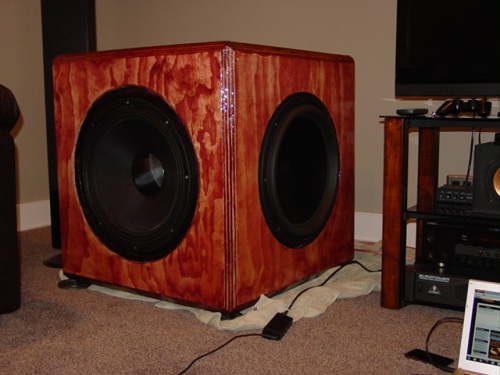
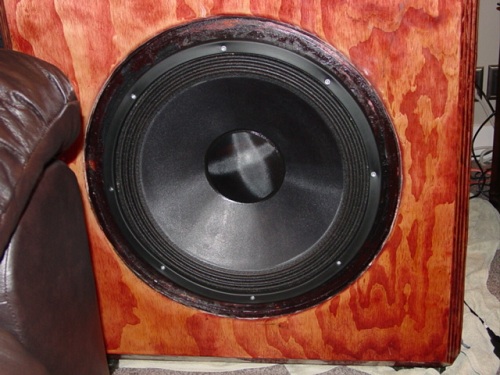
1) After the subwoofer box is completely finished move the subwoofer to the place where you are going to be leaving it.
Advice:
-The subwoofer box can be extremely heavy and awkward to carry, get some helping hands if you need to.
2) Once the box has been moved install the speakers.
Note:
-Be careful when setting the speakers inside the box to not pinch your fingers and damage the subwoofer. Remember to wire the subwoofer before you mount it on the box.
3) Wire subwoofer to main amplifier.
Shown above are pics of where I am putting my subwoofer.
Advice:
-The subwoofer box can be extremely heavy and awkward to carry, get some helping hands if you need to.
2) Once the box has been moved install the speakers.
Note:
-Be careful when setting the speakers inside the box to not pinch your fingers and damage the subwoofer. Remember to wire the subwoofer before you mount it on the box.
3) Wire subwoofer to main amplifier.
Shown above are pics of where I am putting my subwoofer.
Conclusion
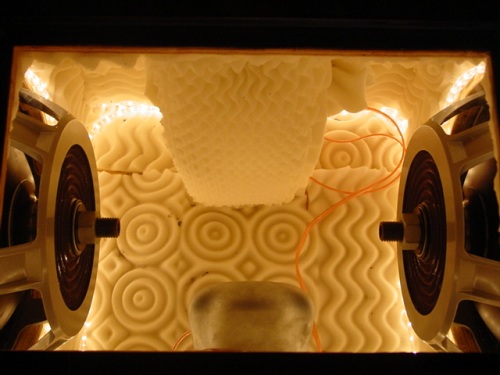
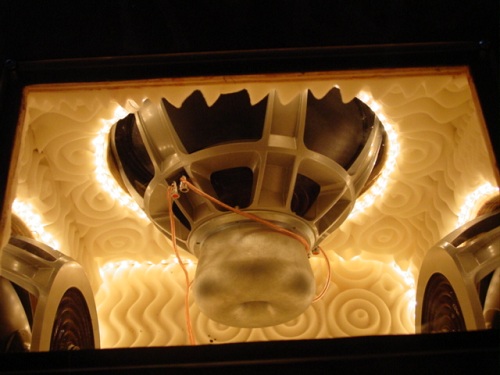
Congratulations you have finished building a subwoofer. Remember to have fun and to not annoy your neighbors from loud bass.